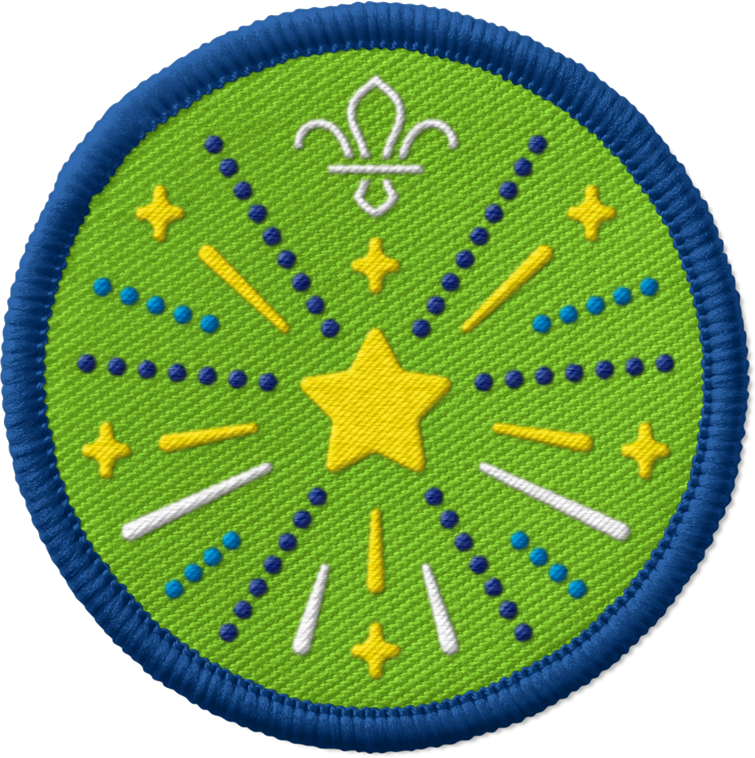
Celebrate Holi
You’ll need
- Paint brushes
- Scissors
- Access to a sink
- Chalk
- Coloured pens or pencils
- Dried food (for example, pasta, beans, rice)
- Tissue paper
- A4 card
- Pens or pencils
Before you begin
- Use the safety checklist to help you plan and risk assess your activity. Additional help to carry out your risk assessment, including examples can be found here. Don’t forget to make sure all young people and adults involved in the activity know how to take part safely.
- Make sure you’ll have enough adult helpers. You may need some parents and carers to help if you’re short on helpers
Setting up the activity
- Everyone could wear colourful clothes, or their favourite colour, to really get into the spirit of this fun festival.
- Depending on your meeting place, you may want to hide more colourful objects around for everyone to find. You may also want to hide a certain type of object, such as colourful counters, for people to find instead.
- You may want to prepare the craft materials and set up tables before starting, as well as create some examples using different techniques.
Scavenger hunt
- Ask everyone if they've heard of Holi. Who knows what it is? Does anyone celebrate it? What does it celebrate? What do celebrations usually look like?
- Holi celebrations are usually fun and very active. Ask everyone to get into pairs or small teams.
- Now, ask people to find things that are a specific colour or, to make it harder, give them a clue for a colour to find.
- For example, a colour on the flag of India (green or orange), the national colour of Nepal and main colour on the flag (red), the colour of the Beaver jumper (blue), or the colour of the spice turmeric (yellow or orange).
- The first team to bring back an item in that colour gets a point.
- If people are wearing colourful items, it might be best to have a rule that you can’t count anything you’re wearing.
- The team with the most points after all the colours is the winner.
Colours and feelings
- When everyone comes back with their object, people could share what the colour makes them think about or feel. For example, maybe blue might make them feel calm or think about sadness.
- The person leading the activity should explain that, although there are different ways to think about colours, in Holi blue is often linked to the Hindu god Krishna and yellow may be linked to health. Yellow's the colour of turmeric, a spice that grows in India and other parts of Asia, which is thought to have health benefits. Red may be linked to the theme of love.
Colourful celebration craft
- Now everyone should create a piece of colourful art to represent the festival.
- You could use a colourful art material, such as paint, chalk, biodegradable glitter, tissue paper, dyed rice, colourful sand or salt, watercolours, or felt tips.
- What art techniques can people use to represent colour throwing celebrations? You could use colourful handprints, marbling or find different ways to safely splatter the paint.
- Once finished, leave your artwork to dry.
- You could create a gallery or display of artwork for people to admire to celebrate Holi.
- You could also create your artwork on cards to give out to people in your local community.
- Holi is a popular Hindu festival that usually happens in March, marking the arrival of spring. It celebrates love, colour, and the triumph of good over evil.
- It’s sometimes known as the ‘festival of colours’ and is famous for its colour throwing celebrations.
- Holi is celebrated around the world, but particularly in India and Nepal. Although it’s traditionally a Hindu festival, it’s inclusive and enjoyed by people who aren’t Hindus too.
- In Hinduism, the festival is linked to the Hindu god Krishna and legends where good triumphs over evil.
- It takes place over two days. The first night usually involves bonfires, to celebrate the triumph of good over evil. The next day, people get together and have fun throwing brightly coloured powder and water at each other.
Reflection
This activity got everyone thinking about the international community and different faiths and beliefs.
Are there any similarities between Holi and any other festivals or celebrations people take part in? People might suggest Chinese New Year, also known as the spring festival.
Colour is a big part of Chinese New Year too, with a focus on the colour red, which is said to bring good luck.
People may also think about Valentine’s Day as another celebration of love.
Why is it important that people learn about festivals and celebrations that they don’t celebrate?
People might suggest that they help us understand each other better, respect what is important to others, and teach us about history and cultures. How would it feel if people didn’t understand and respect things that were important to you?
Safety
All activities must be safely managed. You must complete a thorough risk assessment and take appropriate steps to reduce risk. Use the safety checklist to help you plan and risk assess your activity. Always get approval for the activity, and have suitable supervision and an InTouch process.
- Active games
The game area should be free of hazards. Explain the rules of the game clearly and have a clear way to communicate that the game must stop when needed. Take a look at our guidance on running active games safely.
- Scissors
Supervise young people appropriately when they’re using scissors. Store all sharp objects securely, out of the reach of young people.
- Glue and solvents
Always supervise young people appropriately when they’re using glue and solvent products. Make sure there’s plenty of ventilation. Be aware of any medical conditions that could be affected by glue or solvent use and make adjustments as needed.
It’s up to you know complex you make the clues for the scavenger hunt colours, or whether you just say the colours.
Players could get points for being the fastest to bring back an item of the right colour, or an extra element could be added, such as finding the smallest or most original item. Points could be given for teamwork, too.
If some people move slower than others, focus on the quality of the items people find rather than how fast they are.
All Scout activities should be inclusive and accessible.
When they’re next outside, people could spot colours in nature with Colour-palette places.
Encourage people to share colourful challenges that can be done at home. You could tell everyone what colourful things you made or did the next time you meet.




